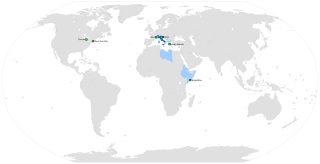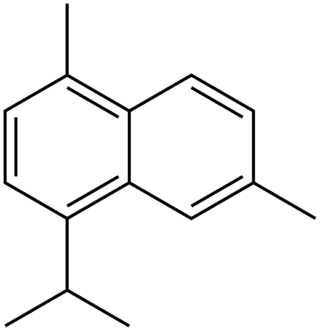
G, or g, is the seventh letter in the Latin alphabet, used in the modern English alphabet, the alphabets of other western European languages and others worldwide. Its name in English is gee, plural gees.

Italy, officially the Italian Republic or the Republic of Italy, is a country in Southern and Western Europe. Located in the middle of the Mediterranean Sea, it consists of a peninsula delimited by the Alps and surrounded by several islands. Italy shares land borders with France, Switzerland, Austria, Slovenia and the enclaved microstates of Vatican City and San Marino. It has a territorial exclave in Switzerland, Campione, and some islands in the African Plate. Italy covers an area of 301,230 km2 (116,310 sq mi), with a population of about 60 million; it is the third-most populous member state of the European Union, the sixth-most populous country in Europe, and the tenth-largest country in the continent by land area. Its capital and largest city is Rome.

Italian is a Romance language of the Indo-European language family that evolved from the Vulgar Latin of the Roman Empire. Together with Sardinian, Italian is the least divergent language from Latin. Spoken by about 85 million people (2022), Italian is an official language in Italy, San Marino, Switzerland, and is the primary language of Vatican City. It has official minority status in Croatia and in some areas of Slovenian Istria.

The Romance languages, sometimes referred to as Latin languages or Neo-Latin languages, are numerous modern languages that evolved from Late Latin and its spoken form, often called Vulgar Latin. They are the only extant subgroup of the Italic languages branch of the Indo-European language family.

Milan is a city in northern Italy, capital of Lombardy, and the second-most populous city proper in Italy after Rome. The city proper has a population of about 1.4 million, while its metropolitan city has 3.26 million inhabitants. Its continuously built-up urban area is the fourth largest in the EU with 5.27 million inhabitants. According to national sources, the population within the wider Milan metropolitan area, is estimated between 8.2 million and 12.5 million making it by far the largest metropolitan area in Italy and one of the largest in the EU.

Romanesque architecture is an architectural style of medieval Europe characterized by semi-circular arches. There is no consensus for the beginning date of the Romanesque style, with proposals ranging from the 6th to the 11th century, this later date being the most commonly held. In the 12th century it developed into the Gothic style, marked by pointed arches. Examples of Romanesque architecture can be found across the continent, making it the first pan-European architectural style since Imperial Roman architecture. The Romanesque style in England and Sicily is traditionally referred to as Norman architecture.

Mount Etna, or simply Etna, is an active stratovolcano on the east coast of Sicily, Italy, in the Metropolitan City of Catania, between the cities of Messina and Catania. It lies above the convergent plate margin between the African Plate and the Eurasian Plate. It is one of the tallest active volcanoes in Europe, and the tallest peak in Italy south of the Alps with a current height of 3,357 m (11,014 ft), though this varies with summit eruptions. Over a six-month period in 2021, Etna erupted so much volcanic material that its height increased by approximately 100 ft (30 m), and the southeastern crater is now the tallest part of the volcano.

The Apennines or Apennine Mountains are a mountain range consisting of parallel smaller chains extending c. 1,200 km (750 mi) along the length of peninsular Italy. In the northwest they join with the Ligurian Alps at Altare. In the southwest they end at Reggio di Calabria, the coastal city at the tip of the peninsula. Since 2000 the Environment Ministry of Italy, following the recommendations of the Apennines Park of Europe Project, has been defining the Apennines System to include the mountains of north Sicily, for a total distance of 1,500 kilometres (930 mi). The system forms an arc enclosing the east side of the Ligurian and Tyrrhenian Seas.

Stromboli is an island in the Tyrrhenian Sea, off the north coast of Sicily, containing Mount Stromboli, one of the four active volcanoes in Italy. It is one of the seven Aeolian Islands, a volcanic arc north of Sicily. Strabo writes that people believed that this is where Aeolus lived.

The provinces of Italy are the second-level administrative divisions of the Italian Republic, on an intermediate level between a municipality and a region. Since 2015, provinces have been classified as "institutional bodies of second level".

The volcanism of Italy is due chiefly to the presence, a short distance to the south, of the boundary between the Eurasian Plate and the African Plate. Italy is a volcanically active country, containing the only active volcanoes in mainland Europe. The lava erupted by Italy's volcanoes is thought to result from the subduction and melting of one plate below another.

Neapolitan is a Romance language of the Italo-Romance group spoken Naples. It is named after the Kingdom of Naples, which once covered most of the area, since the city of Naples was its capital. On 14 October 2008, a law by the Region of Campania stated that Neapolitan was to be protected.

The Supercoppa Italiana is an annual super cup tournament in Italian football.
L, or l, is the twelfth letter in the Latin alphabet, used in the modern English alphabet, the alphabets of other western European languages and others worldwide. Its name in English is el, plural els.

Cadalene or cadalin (4-isopropyl-1,6-dimethylnaphthalene) is a polycyclic aromatic hydrocarbon with a chemical formula C15H18 and a cadinane skeleton. It is derived from generic sesquiterpenes, and ubiquitous in essential oils of many higher plants.

Ferruginol is a natural phenol with a terpenoid substructure. Specifically, it is a diterpene of the abietane chemical class, meaning it is characterized by three fused six-membered rings and alkyl functional groups. Ferruginol was first identified in 1939 by Brandt and Neubauer as the main component in the resin of the Miro tree and has since been isolated from other conifer species in the families Cupressaceae and Podocarpaceae. As a biomarker, the presence of ferruginol in fossils, mainly resin, is used to describe the density of these conifers in that particular biosphere throughout time.

Abietane is a diterpene that forms the structural basis for a variety of natural chemical compounds such as abietic acid, carnosic acid, and ferruginol which are collectively known as abietanes or abietane diterpenes.
Vittorio Simonelli was an Italian geologist and paleontologist.
Wampenite is a rare organic mineral with the formula C18H16, found in Wampen, Fichtelgebirge, Bavaria, Germany.
















